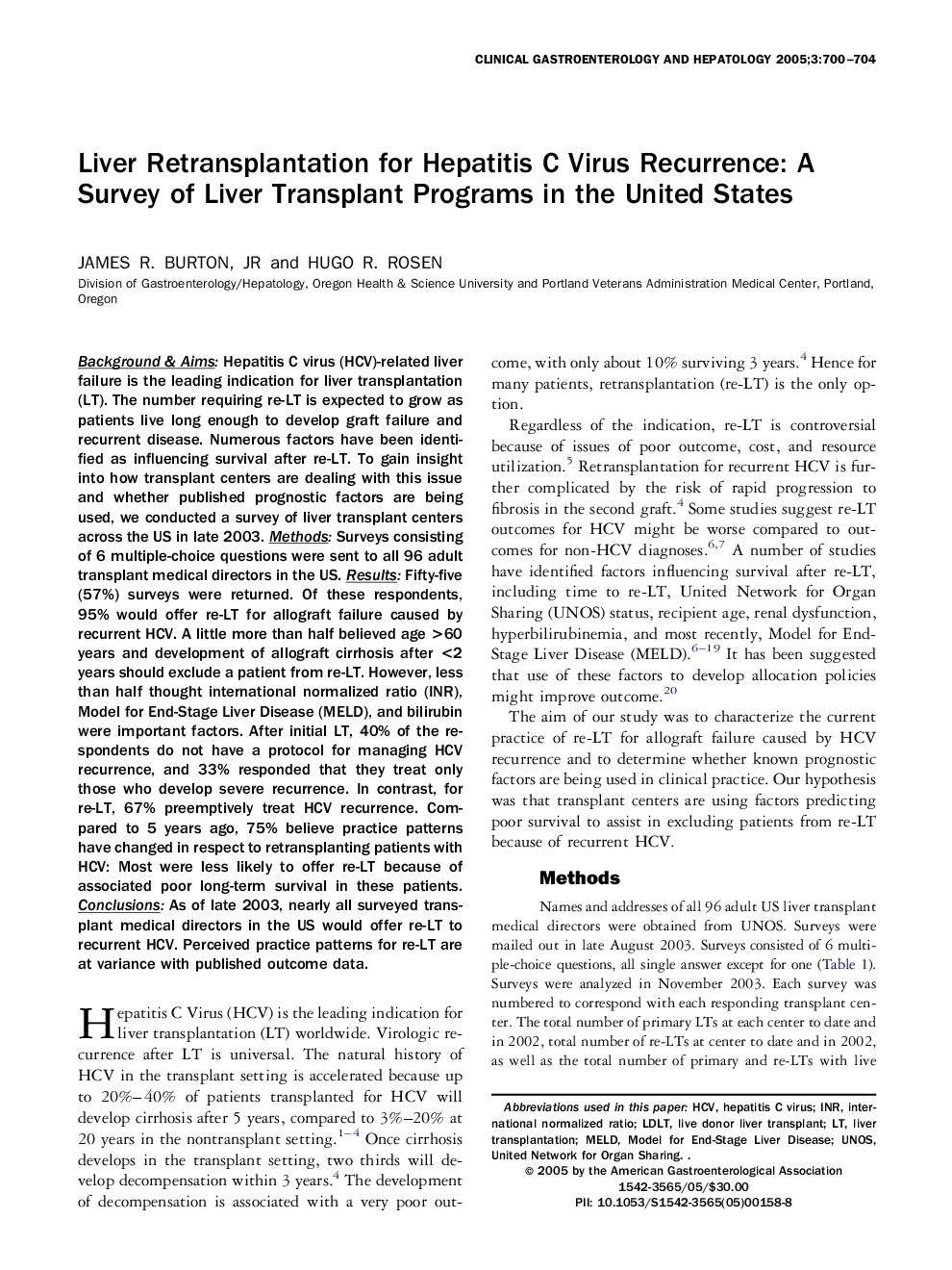| Article ID | Journal | Published Year | Pages | File Type |
|---|---|---|---|---|
| 9241795 | Clinical Gastroenterology and Hepatology | 2005 | 5 Pages |
Abstract
Background & Aims: Hepatitis C virus (HCV)-related liver failure is the leading indication for liver transplantation (LT). The number requiring re-LT is expected to grow as patients live long enough to develop graft failure and recurrent disease. Numerous factors have been identified as influencing survival after re-LT. To gain insight into how transplant centers are dealing with this issue and whether published prognostic factors are being used, we conducted a survey of liver transplant centers across the US in late 2003. Methods: Surveys consisting of 6 multiple-choice questions were sent to all 96 adult transplant medical directors in the US. Results: Fifty-five (57%) surveys were returned. Of these respondents, 95% would offer re-LT for allograft failure caused by recurrent HCV. A little more than half believed age >60 years and development of allograft cirrhosis after <2 years should exclude a patient from re-LT. However, less than half thought international normalized ratio (INR), Model for End-Stage Liver Disease (MELD), and bilirubin were important factors. After initial LT, 40% of the respondents do not have a protocol for managing HCV recurrence, and 33% responded that they treat only those who develop severe recurrence. In contrast, for re-LT, 67% preemptively treat HCV recurrence. Compared to 5 years ago, 75% believe practice patterns have changed in respect to retransplanting patients with HCV: Most were less likely to offer re-LT because of associated poor long-term survival in these patients. Conclusions: As of late 2003, nearly all surveyed transplant medical directors in the US would offer re-LT to recurrent HCV. Perceived practice patterns for re-LT are at variance with published outcome data.
Keywords
Related Topics
Health Sciences
Medicine and Dentistry
Gastroenterology
Authors
James R. Jr, Hugo R. Rosen,
